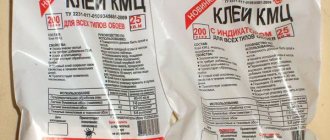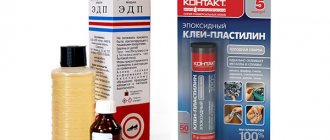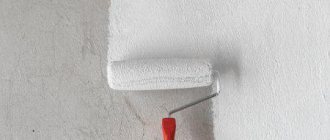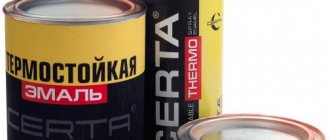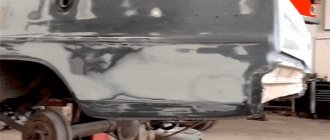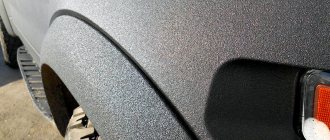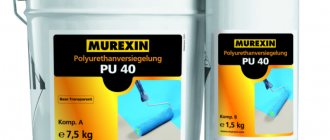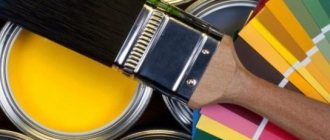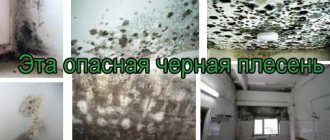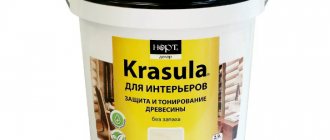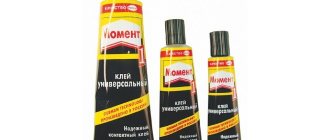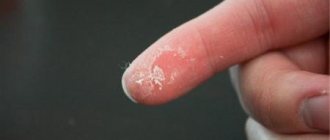All about superglue or where are the limits of superpowers
Expand
Superglue, along with many great inventions, was born by accident, but, as befits a substance with such a name, it has firmly established itself in a variety of economic sectors.
In this article we will tell you what superglue is and what it comes in, what it can and cannot do, and also share useful tips and tricks for using such glue.
A compact and convenient tube of superglue is in every home craftsman's drawer. You can’t do without it if you need to glue a broken handle to your favorite cup, glue the sole of a sandal, or fix a broken children’s car. The scope of application of this amazing substance is very wide, and the history of its emergence and victorious march around the world is very instructive.
Brief historical sketch of the invention of superglue
In 1942, while conducting chemical experiments with cyanoacrylate, the American scientist Harry Coover discovered a substance unknown at that time that had adhesive properties.
In general, the chemist worked on and was engaged in experiments on modifying transparent optical plastic.
Therefore, superglue was not particularly interested in Coover and was forgotten for 9 years. Then, in 1951, in the aircraft industry they tried to invent a glue that was resistant to water and heat. But its consistency was too sticky and not resistant to moisture.
As a result of the painstaking work of the Coover Team to improve the material, high-quality superglue was obtained. In 1958, superglue appeared on the market under the name Eastman 910. Its popularity came only with the release of a television show about it.
The chemist applied the product to a cable and a metal rod and, after hardening, began to hang on this structure, which supported human weight.
Next, National Starch received a patent for the production of such glue. Well, after that, many companies began to produce the substance.
What is superglue
The composition of the substance that we used to call “superglue” necessarily includes 97–99% cyanoacrylates, that is, cyanoacrylic acid esters, plasticizers, stabilizers, and in case of insufficient moisture in the joint - activators, as well as retarders.
To obtain an adhesive gel, ultrafine silicon oxide is also added to the composition for thickening. Solvents are not included in superglue.
The mechanism of action of superglue is actually simple - under the influence of slightly alkaline agents (ordinary water is one of these substances, and atmospheric humidity is quite sufficient), the substance polymerizes, that is, it hardens, becomes hard, while reliably fastening both surfaces together.
Conventional adhesives based on cyanoacrylates can easily withstand a load of 150 kg/cm2, and more advanced ones, for example, Black Max from Loctite - 250 kg/cm2. The heat resistance of regular superglue is up to 70–80 degrees, modified - up to 125 degrees.
Super glue in gel form
Creating the gel took a lot of time for the manufacturers. As a result, we obtained a product consisting of the following components: rubber resin or formaldehyde, rosin esters, acetone, hydrocarbons. For better density, ultrafine silicon oxide can be added.
Gels are always synthetic compounds, so we must not forget about safety measures when working.
For better density, ultrafine silicon oxide can be added.
Classification of superglue
In our country, it is customary to call any glue that contains cyanoacrylates and hardens almost instantly “superglue.” However, in fact, there are several varieties of this substance:
- One-component superglue based on ethyl cyanoacrylate. As the name implies, it does not contain additional active substances. It perfectly glues a variety of surfaces and hardens quickly - for this useful property it is called second glue. The full hardening time does not exceed 24 hours at air humidity of at least 55%, but in general, after just a minute the surfaces are held securely, and after two hours the glued object can be used without fear.
- Two-component. An adhesive that contains not only a cyanoacrylate binder, but also fillers that give it thermal and electrical conductive properties. The remaining characteristics of the two-component adhesive are similar to the one-component composition.
Depending on their consistency, superglues are divided into:
- Liquid, they are thin or penetrating. They are used only where the gap is very small - they penetrate perfectly between two tightly fitting parts, into holes less than 0.05 millimeters thick.
- Average. Universal adhesives that have the widest range of applications.
- Viscous or gel-like. Capable of filling small voids.
Features of the composition of superglue
The molecular formula is the same for all cyanoacrylate adhesives: CH2 = C(CN)COOR. This is a liquid cyanoacrylate monomer, or cyanoacrylic acid ester. R is a radical, it can be ethyl, methyl, butyl and other monovalent radicals, depending on which the technical characteristics of the glue change. Any superglue contains up to 97-99% cyanoacrylate, as well as the following substances:
- plasticizers – give superglue elasticity;
- stabilizers - keep the glue quite liquid before application and provide the necessary properties after hardening;
- thickeners – provide the necessary thickness and consistency of the gel;
- modifiers - necessary to enhance the water resistance of superglue to the level of D3-D4, heat resistance (divinylbenzene, cyclopentadiene and others);
- adhesion enhancers – increase the adhesion strength of glue (PVA, polyacrylic);
- curing activators (needed when there is insufficient humidity) or curing inhibitors (to prevent spontaneous polymerization);
- fine metal powders - to improve the conduction of electricity.
Unlike other adhesives, superglues do not contain organic solvents. This makes them safer for humans and also suitable for gluing metal. On sale you can find different types of superglues, which are supplied in the form of blisters, tubes, jars, and adhesive tapes. They have a common feature: a small volume of packaging, because after opening it, even with a slight decrease in the tightness, the gel glue quickly becomes viscous and then completely deteriorates.
The history of superglue
Like many other ingenious inventions, superglue was discovered completely by accident, not once, but twice. The American chemist Harry Coover was not at all busy searching for the ideal adhesive; in 1942, the development of plastic for optical sights was much more urgent.
Coover used cyanoacrylates in his work, but quickly abandoned his idea, since these substances tightly adhered to any surface and laboratory equipment quickly failed.
Unfortunately, at that time, Harry Coover did not appreciate all the prospects of the accidentally discovered properties of cyanoacrylates and continued to work on improving optical sights with other materials.
It was only in 1951, 9 years after the first discovery, that the chemist, working with his colleague Fred Joyner to create an acrylic polymer for jet canopies, again encountered the amazing properties of cyanoacrylates and this time decided to take the creation of superglue seriously.
It took the scientist another seven years to develop the optimal composition of the substance, adding stabilizers and plasticizers, and finally, in 1958, Eastman Compound 910 was ready for use.
By the way, the Russian name “superglue”, which we usually call all adhesives based on cyanoacrylates, is tracing paper with SuperGlue - under this name Dr. Harry Coover patented his composition. It's a pity, but superglue began to make a profit only after the SuperGlue patent expired. However, Harry Coover deservedly received his share of fame, he himself starred in advertising for his invention and was awarded the US National Medal of Technology and Innovation.
History of the invention of glue
Superglue began its history in 1942. It was at this time that the American chemist G. Coover, while conducting experiments with cyanoacrylate, obtained a new substance with unique adhesive abilities. Initially, the scientist did not have a goal to create glue; he worked on improving transparent plastic for optics, working at. Therefore, superglue, as a by-product, was ignored for some time.
We remembered the cyanoacrylate composition 9 years later when searching for a universal adhesive with waterproof and heat-resistant properties for the aircraft industry. At that time, it was too sticky and spoiled if it came into even the slightest contact with moisture. After extensive work, Harry Coover and his colleagues improved the composition and obtained a high-quality base for the glue.
Another 7 years later, in 1958, superglue appeared on the market under the brand name Eastman 910. But it did not become popular immediately, but only after the release of a television program about its properties. The inventor smeared a cable and a metal rod with superglue, connected them, and after drying, hung on the structure in the air - the strength of the composition was enough to support the weight of a person. Afterwards, the patent for the production of superglue was given to the National Starch company, and later many brands began to produce it.
Scope of application of superglue
Superglue is widely used in a variety of fields of activity - in everyday life, industry, production, instrument and mechanical engineering, repair and construction.
Currently, the number of modifications of superglue is constantly growing, and accordingly, the scope of its use is expanding.
Thus, in medicine, superglue is already used as a sealant to stop bleeding and treat wounds. And not so long ago, Swedish scientists developed a superglue composition that will help treat fractures, including the spine and skull bones, without the use of metal plates.
Modern superglues can withstand enormous loads, so they can be used not only for gluing small parts, but also perform much larger tasks.
Thus, the new Loctite superglue is considered the strongest in the world and was included in the Guinness Book of Records. As evidence, two cars weighing over five tons together were glued with Loctite to a metal frame and raised to a considerable height. The cars lasted for some time, and the representatives of the Book of Records used only nine drops of superglue to glue them together!
According to scientists, over time, superglue will be able to replace welding and other, more labor-intensive types of connections.
As we can see, today superglue is truly universal and is used literally everywhere where dissimilar or small materials need to be glued together efficiently and as quickly as possible.
By the way, few people know, but cyanoacrylate vapors can be used to remove fingerprints. Do you want to find out who took your diary without asking? Use superglue.
Safety precautions when working with superglue
Since superglue hardens and glues surfaces instantly, and also has a number of other features, the following safety rules should be observed when working with this substance:
- Even if you are as careful as possible, a drop of glue can still end up on your clothing, so be sure to protect it.
- Cyanoacrylate fumes are toxic - be sure to work with glue in a ventilated area.
- Use the required amount of glue. You should not apply a lot of superglue for the following reasons: firstly, it will increase its hardening time and worsen the quality of work; and secondly, there is a high probability that the excess will protrude from the seam and fingers or other objects that were used to press the glued parts will stick very firmly to the part.
- Since the glue sets instantly upon contact with atmospheric humidity, the tube spout often becomes clogged. Therefore, before reuse, it should be carefully cleaned with a needle or the tip of scissors. Under no circumstances should you press on the tube in the hope of punching it with force - the glue can shoot out a considerable distance, and in the best case, you will stain your clothes or table, in the worst case, the glue can get into your eyes.
- You should point the tube of glue away from you, preferably downwards, trying to cover it as much as possible with your hand, thereby eliminating the possibility of superglue getting into your face, especially your eyes - if it gets on the eye shell, the glue causes a serious burn, which requires long-term treatment and medical intervention!
- There is no point in bending or folding a started tube of superglue. It breaks very easily at the bends - you will stain your hands, clothes, or ruin the part being glued.
And another serious danger is that when gluing materials that contain cellulose, such as cotton fabric and paper, there is a possibility of an exothermic reaction, that is, sudden heating and even ignition. That is why safety precautions prohibit the use of woolen and cotton clothing, especially cotton gloves, when working with glue that contains cyanoacrylates. Otherwise, you may get a burn, minor if there is not enough superglue, but serious if the amount is large enough.
Today, special types of superglue have already appeared, which, thanks to special additives, can be used for gluing cardboard and do not cause an exothermic reaction.
Superglue solubility and safety precautions
If the superglue has thickened, you won't be able to thin it. In any case, upon contact with air, it instantly hardens. If glue gets on surfaces and materials not intended for this purpose, it is also difficult to dilute it, and there is a risk of damage to the base. Acetone or another organic solvent can be used as a means to remove superglue, but it is not always possible to clean the product. You can purchase a specialized remover; Cosmofen is rightfully considered the best. You can replace the remover with nitromethane.
When working with superglue, do not wear cotton gloves. When they are soaked, there is a risk of an exothermic reaction causing a burn. It is better to use regular rubber gloves. The room should be thoroughly ventilated: despite its low toxicity, many superglues emit an unpleasant odor. If it gets into your eyes, rinse them thoroughly with clean water and consult a doctor immediately!
Poisonous properties of cyanoacrylates
Let us immediately note that in the hardened state, superglue is safe, so it can be used for gluing a cup or plate. BUT! You still shouldn’t drink hot tea from such a cup, because superglue softens when exposed to liquids at temperatures above 70 degrees. So we recommend using cyanoacrylate glue only for gluing decorative tableware, such as a painted plate or flower vase, and not for serving items from which you plan to eat.
In liquid form, directly during gluing, superglue releases toxic fumes, which in high concentrations can cause nausea and dizziness. Therefore, we repeat, you should work with superglue in rooms with good ventilation.
However, there are special types of cyanoacrylates, for example, octyl-2-cyanoacrylate, which is the least toxic of all cyanoacrylates. Such adhesives are considered medical and were successfully used during the Vietnam War to stop bleeding, provide first aid to victims and glue wounds.
Today, the LifePath patch, developed with superglue, is applied to wounds when the surgeon cannot accurately determine the source of bleeding and firmly seals the damaged area, saving the patient's life.
Not long ago, medical superglue saved the life of a three-month-old girl with a brain aneurysm. Specialists at the University of Kansas Clinic sealed the site of a rupture in the child’s artery with medical superglue, which literally “soldered” the site of the hemorrhage into the brain in a few seconds.
Useful tips
In this section we will answer the most popular questions that arise when using superglue:
- Does superglue conduct current? Regular one-component superglue is not, it is an insulator. There are special adhesives that, with the help of special fillers, obtain the ability to conduct current or heat.
- How to wash glue off your hands? Superglue often sticks fingers together, since working in rubber or latex gloves is not very convenient when it comes to small parts, and cotton gloves, as we remember, cannot be used. A special anti-glue solvent will help you cope with the problem; you can also simply wash your hands with hot water and soap and rub with a washcloth, use acetone or Dimexide pharmaceutical solution. When working with Dimexide, you should carefully read the instructions, since the drug is toxic and is intended for external use only. And don’t worry, even without using solvents, superglue will come off your fingers by itself in a couple of days.
- How to remove superglue from clothes? If a drop of superglue gets on your favorite jeans or sweater, you should use an Anti-Glue solvent again. However, not all fabrics can boast the necessary resistance to this chemical, so try applying a little solvent to an inconspicuous area, and only then clean the stain. Another option is to heat the glue stain with an iron through a thin cloth, alternately on one side and the other. Under the influence of high temperatures, the glue is destroyed and your clothes will become clean after intense heating with the iron.
- How to clean superglue from a table? If the surface of the table is covered with polish, then only the spot of the stain should be left open, and the rest should be covered with cellophane so as not to damage the polish. You can use pharmaceutical dimexide or solvent 647. Attempts to remove superglue from the surface of the table by heating with a soldering iron or iron are fraught with fire, and it is also unknown how the polish, varnish or paint itself will react to heating - together with the glue stain, the table may lose part of the surface itself . The simplest and most effective way is to use a kettle or ladle with boiling water - such a vessel should be placed on the glue stain for a while. Not a single ordinary superglue can withstand temperatures of 100 degrees, only modernized ones.
- How to fill large cracks in plastic products with superglue? In this case, the amateur method of combining superglue with soda is widely used. For example, you have a significant crack in a plastic part. Pour a small amount of soda into this gap, and apply a thin layer of liquid superglue on top. Soda instantly turns into acrylic-like filled plastic, which is in no way inferior, and sometimes even superior, in strength to the original material.
Finally, I would like to talk about several curious cases of using superglue, which, although they look, to put it mildly, ridiculous, still prove the reliability and amazing adhesive properties of this substance.
Thus, one resident of Germany, having ended up in a Spanish prison, decided not to part with his fiancee, who came to him on a date, and asked her in advance to bring superglue for gluing car parts. The couple poured superglue onto their palms and exchanged a firm handshake. As a result, it took doctors several days to separate the lovers.
And the Mexican schoolboy did not want to go to school so much that he simply glued his hand to the headboard and still missed one day of school, during which his parents and doctors tried to unhook him.
The worst thing happened to an Englishman who became a victim of pranksters who smeared superglue on a toilet seat in one of the public toilets in London. The poor guy had to go to the hospital straight from the steel seat.
Superglue is a truly amazing substance, which today is the most popular and easiest to use during repairs, in industry, construction and, of course, in everyday life. The few disadvantages of superglue include the rigidity of the seam, so it cannot be used for joints that experience fracture loads, low heat resistance and inapplicability for joining polyethylene, polypropylene, silicones and Teflon. However, superglue has much more advantages and disadvantages, and companies continue to develop more and more new compositions that expand the scope of application of this legendary super-helper.
Review of Super Glue Gel: characteristics and application
Home Types Review of Super glue gel: characteristics and application
Glue Moment
People began using glue long before our days. So Neanderthals used tree resin to glue broken shards of clay pots and repair wooden products.
Before reaching the present day, the composition of the glue has undergone many changes and additions. Thanks to the development of progress, today people can use a tool to repair almost any thing - a universal second Super Glue - gel.
Universal “Super Glue Gel”: glues everything together in a second
Universal instant Super-glue has long become a favorite material for use in everyday life, in production, for repairing leather goods and creativity. Numerous tests have led to the fact that manufacturers have developed the optimal composition, which includes:
Second gel Moment
- rubber resin,
- formaldehyde resins,
- rosin ester compounds,
- acetone,
- various hydrocarbons.
Depending on the manufacturer and brand, the composition of Super Glue may change, but in any case it remains a completely synthetic substance that must be handled with extreme care and not given to small children.
The instructions for the Super Glue Gel highlight the following general technical characteristics:
- suitable for any materials (exceptions occur individually for each brand),
- waterproof,
- storage conditions in original packaging in 3 g packages: from -20 to +30 degrees for 24 months,
- does not lose technical qualities after defrosting.
Second universal “Super Moment gel”
Second glue Moment
Secondary glue “Super Moment Gel” is available in a metal tube of 3 g. The price for one unit does not exceed 50 rubles, so it is quite affordable for all segments of the population.
Universal glue “Super Moment Gel” will reliably and firmly connect:
- metal,
- plastic,
- wood and cork,
- cardboard and paper,
- leather and fabric, rubber,
- porcelain and clay.
Not suitable for flexible connections or for working with polyethylene. Since the composition contains harmful toxic substances cyanoacrylate, Super Moment glue gel 3 g is not allowed for gluing dishes and children's toys. When working with it, you must follow certain safety rules:
- do not inhale fumes,
- ventilate the room well,
- avoid contact with heating elements, open fire,
- In case of contact with skin, remove with soap and warm water,
- In case of contact with mucous membranes, consult a doctor.
- Instructions for use:
- prepare the surfaces to be glued,
- unscrew the cap and remove the protective membrane,
- apply a thin layer of glue to the edges,
- strongly squeeze the surfaces together, holding them in this position for about 1 minute,
- Clean the tip of the tube from residual glue and screw on the cap.
Super glue gel “Contact”
"Contact"
Super-glue gel “Contact” KM 432-318 GL has a fairly dense jelly-like consistency, it does not flow and is absolutely transparent. One-component “Contact” is designed for reliable connection of such materials as:
- rubber (but not silicone),
- solid wood and other porous materials,
- leather,
- PVC plastic,
- metal,
- porcelain.
Not suitable for working with ABC plastic, polypropylene, polyethylene and Teflon.
"Contact" KM 432-318 GL
Secondary “Contact” KM 432-318 GL has the following properties:
- high seam strength,
- gluing speed up to 30 seconds,
- dries quickly,
- ten second correction possibility,
- can be used as a material for filling small cracks and gaps,
- withstands from –50 to +80 degrees.
The instructions for use are simple and no different from the conditions for using Moment super glue, except that it is applied to one of the surfaces to be glued. You can remove glue that gets on your skin using soapy water and a rich cream.
Properties and technical characteristics of superglue
Super glue can also be called second glue, since it instantly dries on the skin. How long does it take for superglue to dry? Typically, the first setting takes from 5 seconds to a minute, however, for the polymerization process to complete, it takes from 6 hours to a day. If the humidity level is low, it may take 120 seconds. If you immerse the seam in water, it will take a few seconds to harden.
The following composition characteristics are highlighted:
- Strong adhesion of materials if they are well compressed together;
- Withstand heavy loads – 150-250 kg;
- When the glue dries, the seam will be translucent;
- There are species that can easily withstand negative temperatures, as well as high-temperature exposure up to +250 degrees;
- If individual elements are not used, the seam does not conduct current. And an electrical insulating agent can be used;
- You can process a gap up to 0.1 mm; there are types that can cope with 0.25 mm gaps.
What temperature can superglue withstand? Ordinary ones can withstand readings from -60 to +80 degrees.
Typically, the first setting takes from 5 seconds to a minute.
Super glue gel “Strength”
Glue "Strength"
Another representative of the family of universal second adhesives with a helium structure is the “Strength” adhesive. The Chinese-made product has the lowest price compared to the above-mentioned “Moment” and “Contact”: 15-20 rubles per 3g package. Designed for gluing almost any parts from all types of plastic, artificial and natural leather, wood and metal.
Teflon and polyethylene will not stick together. The instructions for use also do not have any distinctive features and recommend thoroughly cleaning and degreasing the surfaces before gluing, apply glue and strongly compress the materials for 10-15 seconds. Not suitable for flexible connections.
The characteristics and composition of the universal second “Super Glue Gel” make it almost impossible to try to remove its excess from the desktop. Vinegar, Vaseline, ethyl alcohol and acetone available in every home will come to the rescue. It is necessary to moisten a cotton pad in any of the products and rub the contaminated area with force. The result will not be long in coming.
Rules for working with superglue
You can use superglue yourself at home and you don’t need any skills to do it. The main thing is to do everything quickly and smoothly, because it will be impossible to correct mistakes, with the exception of working with hygroscopic objects.
For such items, it will be possible to adjust the position of the parts within a couple of minutes.
If there are cracks and holes, before gluing, you need to seal them with concrete dust, plaster or soda, then apply a drop of glue. In this case, the gaps will be hidden under a compacted substance resembling acrylic.
The exterior is washed, cleaned, and degreased with acetone or alcohol.
The next step is to open the bottle, having previously pierced the protective metal barrier, squeeze a small amount of glue onto the dried surface, press very tightly onto the other surface for half a minute, and leave to dry.
Bonding of surfaces must be carried out from the central part to the edges to prevent air from entering inside.
Before screwing on the tube cap, be sure to thoroughly wash the spout of glue, otherwise it will be difficult to open the product later with the cap glued.
Areas of use:
- Bonding various types of plastics, rubber, metals, wood, porcelain, ceramics, leather, cork, fabrics, cardboard and paper.
- It is very convenient to use thanks to a special bottle with a dispenser spout and a screw cap.
- Not suitable for bonding polypropylene, polyethylene, polytetrafluoroethylene (Teflon), glass, glazed surfaces and silicone rubber.
- Also not suitable for gluing very soft leather.
- Not applicable for gluing dishes into which hot liquids will be poured and dishes that may come into contact with food.
Tips and tricks:
Precise dosing and application
Squeeze a small amount of glue onto one of the surfaces to be glued and quickly spread it with a previously prepared piece of paper or a match. If necessary, add more glue and again spread it evenly over the glue-free surface. When there is enough glue, connect the surfaces.
Clean and unstick
Don’t worry if you get your fingers dirty with second glue or even glue them together. There are two ways to separate them. The first is to put your fingers in a container of very warm water and hold them there for a while. Second, wipe your fingers with vegetable oil. After you have done one of these operations, you can gently scrub the stained area, or separate the glued fingers by moving them back and forth. Do not make sudden jerks or separate your fingers using great force! This can be painful and cause skin damage.
Storage:
Store tightly closed at temperatures between minus 20°C and plus 30°C.
Ideal storage conditions are from plus 2°C to plus 8°C.
Application
1. The surfaces to be glued must be dry and clean.
2. To increase the adhesive strength of the surface, it is recommended to additionally clean it with sandpaper and degrease it with gasoline or acetone.
3. Before gluing, keep the materials at room temperature (from +18°C to +25°C).
4. Apply glue to one of the surfaces and immediately press the parts together. The speed of setting depends on air humidity. High humidity speeds up the setting time, while low humidity slows down the process.
5. Fixation time is usually 5-60 seconds.
6.Press from the center to the edges to avoid air accumulation. Glue the edges carefully.
Popular posts
- Chair for dressing table Chairs for dressing tables in Moscow - 189 Products Company from Moscow, delivery 29643 a In…
- Silicone sanitary sealant Silicone sanitary sealant white in Moscow - 1491 products Company from Moscow, delivery (tomorrow) 140...
- Shelf in the hallway Currently, there are a huge number of different options for shelves in the hallway, and this is directly ...
- Insulation of the floor in a wooden Insulation of the floor in a wooden house from below: materials and installation technology SHARE ON SOCIAL NETWORKS One of the common…
Adhesive manufacturers
Superglues are produced by almost all well-known manufacturers of such products, both foreign and domestic. Here are the most popular brands:
- "Contact". Superglue plus primer. The product is sold complete with a primer and is intended for bonding complex and dissimilar materials, including ABS, PP, PE plastics. The primer increases the surface activity of materials, thereby increasing the adhesion of superglue. The main composition is applied to the surface after the primer has completely evaporated.
- "Super Epoxy Moment." This superglue is two-component and does not include cyanoacrylate; instead, it contains epoxy resin. Both components (resin and hardener) are placed in convenient syringes from which they can be squeezed out in strictly measured doses. Superglue "Moment" is ideal for gluing porcelain, crystal, wood, clay products, plastic, metal, and precious stones.
- "Super Grip." Another epoxy two-component superglue, suitable for metals and alloys, glass and ceramics, decorative and facing boards. Can be used for industrial purposes. Superglue does not shrink, is low-toxic, and can be used as a putty or sealant.
- "Monolith". This is one of the cheapest superglues, while still having decent quality. Most often, the composition is used for shoe repair, gluing heels and soles. Superglue will reliably fasten leather, leatherette, vinyl, plastic and metal, wood and all its derivatives.
- "Superglue 505 Universal super strong." The product hardens in 20 seconds, is absolutely transparent, suitable for all materials except Teflon, styrofoam, polypropylene and polyethylene. The disadvantage of superglue is the rigidity of the adhesive seam, which does not withstand fracture loads well. A variety of the product is “Superglue 502”, which is characterized by higher heat resistance.
- "Master". This superglue bonds ceramics, porcelain, plastic, metal, leather, rubber, cardboard and wood. Sold in mini-packs of 3 g, as well as whole blisters containing 12 tubes/3 g.
- "Crocs 301." Universal superglue for any materials, provides reliable bonding for a long time. Seals, fills cracks and chips. It has a very convenient applicator, protected from the composition hardening in the canal.
- "Super Moment Pro." Reliable, long-lasting superglue, packaged in a reusable bottle with a convenient lid. Resistant to moisture, heat-resistant, suitable for all materials except very soft leather, polyethylene, polypropylene, Teflon, silicone rubber. Also, this brand of superglue is not used on glazed surfaces.
- Loctite. A rapidly polymerizing composition based on cyanoacrylate, has a low viscosity. Superglue is intended for any materials, especially those that are difficult to glue. Its stability is less dependent on air humidity than other adhesives. The downside is the high price.
- 5 Second Fix. Other names for glue are plastic welding, liquid plastic fixative. It has an original design in the form of a pen with a thin tip, which is equipped with a battery and an ultraviolet emitter. After applying the product, you need to shine light on it for about 5 seconds, which seriously increases the strength of the adhesive seam.
- Wurth Klebfix. Structural adhesive for installation and repair, easy to open and close, equipped with a spill prevention system. The bottle has a dispenser, and the glue is applied strictly drop by drop. The quality of gluing with this composition is at the highest level.
